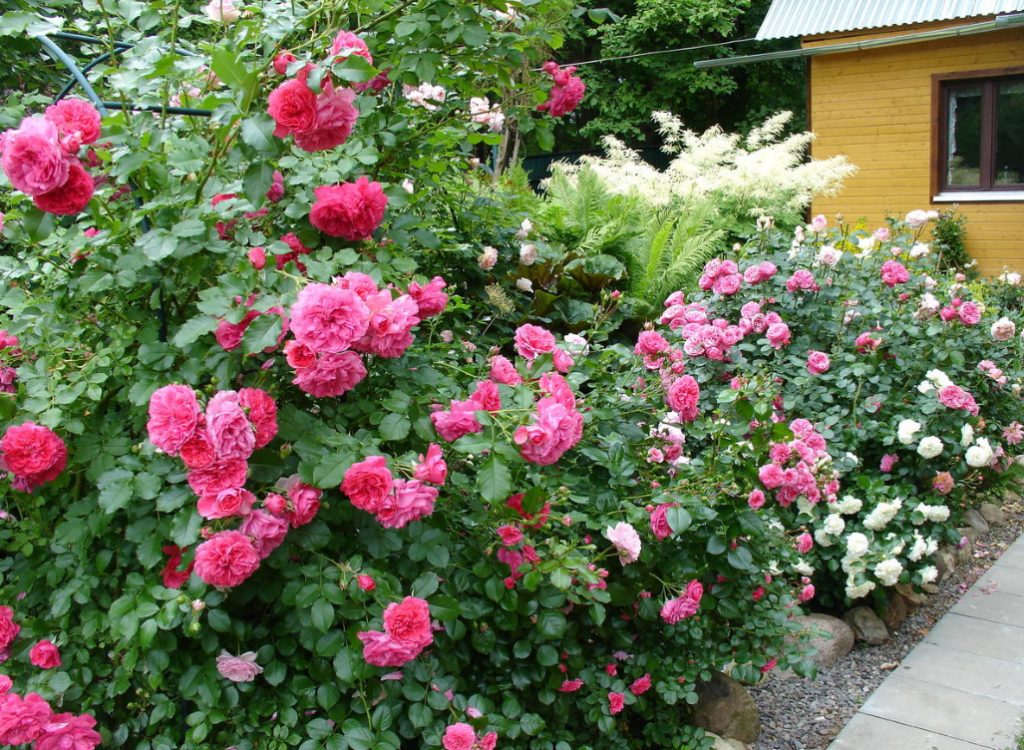Proper planting of roses is the basis of their health, longevity and good flowering. Everything is important: the choice of location, the composition of the soil, the planting time, and its technology.
Where to plant roses
Roses need a lot of sun to grow and bloom profusely, but it is better to protect them from the hot afternoon rays with a light penumbra. Roses can’t grow in the deep shade.
Planting roses do not like cold stagnant air, require constant ventilation, but need protection from a strong North wind. At the same time, you should not put them too close to the walls of buildings, fences, where they overheat under the influence of reflected heat rays and reduce immunity. Rainwater from roofs and large trees should not be allowed to flow down on roses.
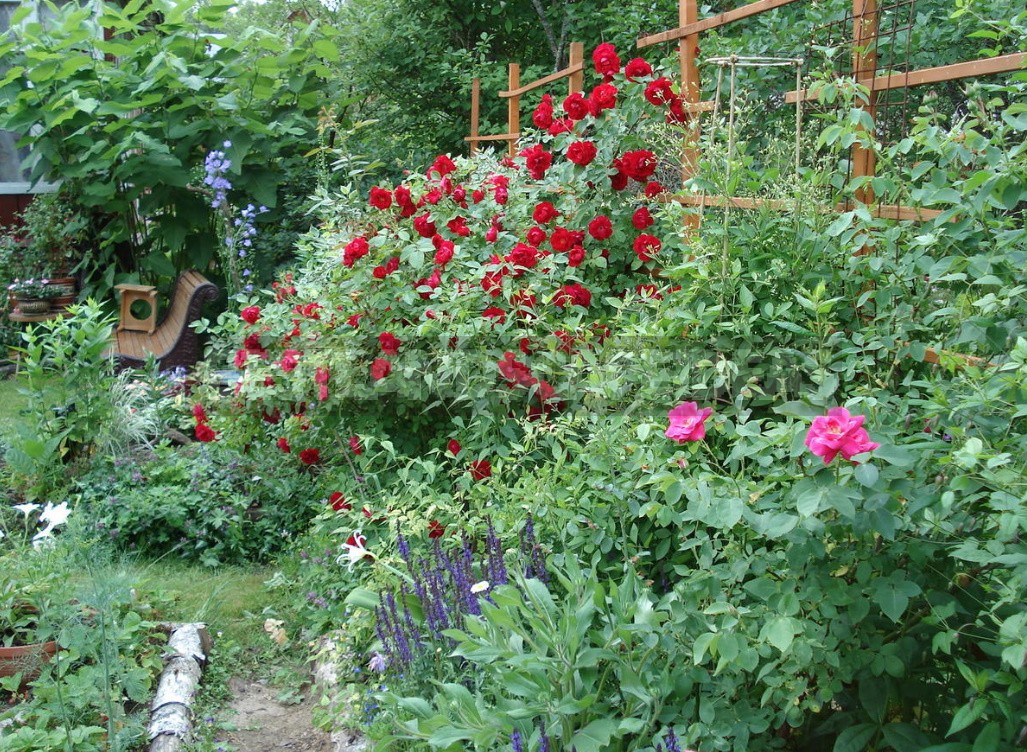
Avoid planting in the middle of paved or paved areas. In areas where roses used to grow for a long time, the soil must be replaced, because it can be depleted and infected with pathogens characteristic of roses fungal diseases. If the ground water on the site lies above 0.8 m, it is necessary to create drainage; if this is not possible, you will have to find another place for planting.
What soil do roses like
Deeply treated soil is the key to success in growing roses. Single roses are planted in separate planting pits, and under flowerbeds and group plantings, it is better to conduct a General Plantage, with linear plantings, trenches are prepared.
If the place and forms of planting are selected, then a few weeks before planting, it is necessary to prepare pits with a depth of at least 60 cm. The fertile (sod) layer after removing the roots of perennial weeds can be used as a basis for preparing a planting mix, the infertile layer should be removed. The bottom of the landing pit is slightly dug or loosened with a pitchfork, fill in 1-2 shovels of gravel, pebbles or broken bricks for drainage, then fill with the planting mixture.
Loose fertile slightly acidic loam with good water permeability can be considered an ideal soil for roses. Since we have loamy soils in almost every garden, preparing them for planting roses is not so difficult. Heavy clay and light sandy loam soils will require more attention.
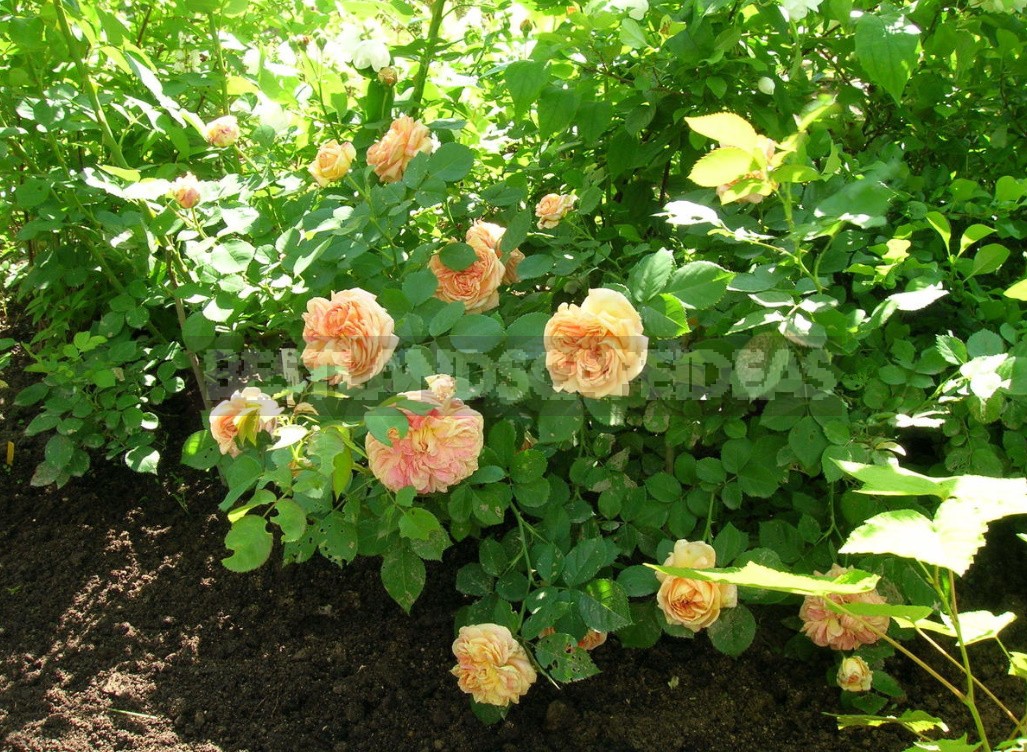
On the basis of structural loam (garden land), it is easy to prepare a planting mix. For 2 buckets of loam, add 1 bucket of rotted manure, a little peat, coarse sand, garden compost, and, if possible, cut straw.
If the soil is mostly sandy, then this recipe should be supplemented by adding 1 bucket of clay to the base soil. In heavy loam and clay, add 1-2 buckets of sand. After thorough mixing, the finished composition is used as a basic basis for preparing the planting mixture.
Instead of mineral fertilizers, it is more useful to add 1 Cup of sifted wood ash to the planting mix at the rate of 1 Bush. If mineral fertilizers are applied, it is necessary to distribute them in the lower part of the pit so that there is no direct contact with the roots of the seedling.
Landing dates
Various opinions are expressed regarding the timing of planting roses. Ingrained opinion that in the middle lane, spring planting is preferable. I think that the reason for this belief is purely technical in nature as to the optimum time of planting the seedlings do not exist. In the southern regions, where most of the planting material was supplied, rose seedlings had not finished growing by this time.
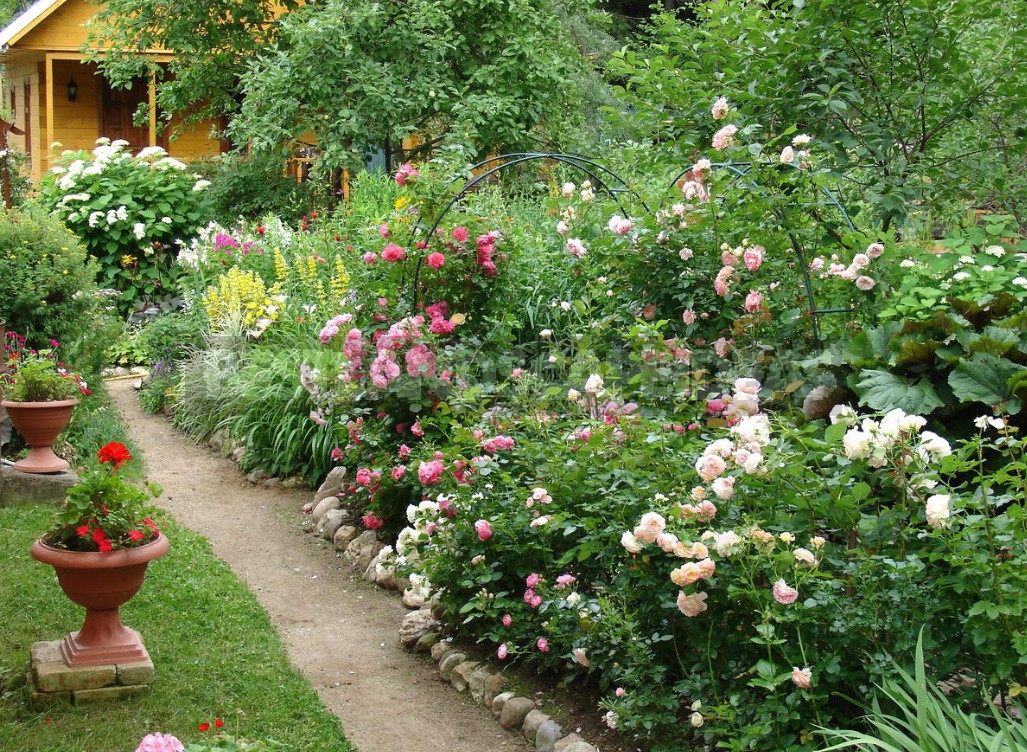
I am convinced that roses, like deciduous shrubs, are best planted in the fall. Spring planting is more risky and less productive, especially for powerful varieties with thick long shoots. Only on cold and waterlogged soils and in areas with a harsh climate, it is better to plant roses in the spring, when the soil warms up.
The optimal time for planting roses is from September 10 to October 10. Before the onset of frost, the seedlings will have time to take root well, and in the spring they will begin full vegetation. Seedlings in containers can be planted from spring to mid-summer, but in order for the roots to grow outside, regular watering is necessary for 6-8 weeks.
Rules for planting roses
If you are making a group landing, then first you need to mark up. Stick a peg in the place of each future plant. The accuracy of marking is especially important in linear plantings.
Seedlings with an open root system are placed in water for 12-24 hours before planting. Dry, broken and diseased shoots are cut to healthy wood. The roots are cut to a length of 20-25 cm. It is important that all the main roots have fresh cuts to the living tissue.
During spring planting, 2-4 buds (about 15 cm) are left on the shoots of floribund and tea-hybrid roses. The length of the shoots of climbing roses try to keep about 40 cm, in Park roses, only the tops are cut. During autumn planting, the seedlings are not cut short, only the dried tops of the shoots are removed.
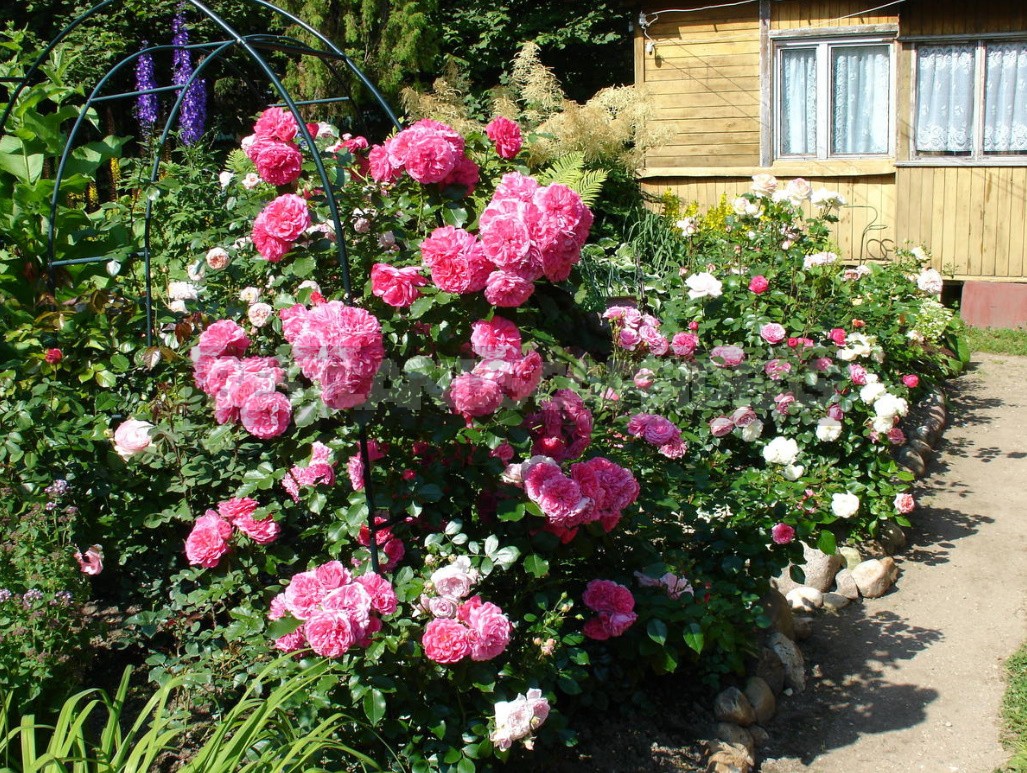
The roots of the seedling should fit freely in the planting hole. At the bottom of the planting hole, fill the soil mixture with a mound, spread the roots evenly over the mound and, supporting the seedling, gradually fill the hole with a good seal, leaving the side about 3 cm. The soil mixture should be slightly moist and loose when planting.
The place of budding (thickening on the root neck, where the shoots begin to grow) after planting should be at a depth of 4-5 cm, and it should be taken into account that the ground together with the seedling will sag. After filling the hole with this important requirement and leaving the side, it is necessary to water the plant abundantly. When the water is absorbed, fill the ground and water again.
The next day, check the depth of planting and, if necessary, correct it. Then slightly loosen the soil and hilling the seedling with structural soil, this will protect the stems from drying out during rooting. During spring planting, the plants are unlearned with the beginning of Bud germination. In seedlings of autumn planting before shelter for the winter, if necessary, slightly trim the tops of the shoots, if they have dried up or sprouted upper buds.
